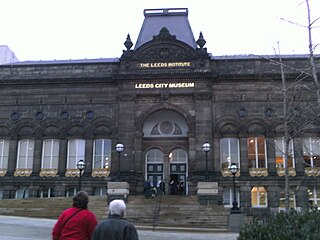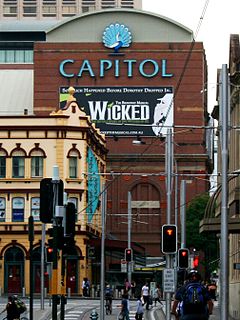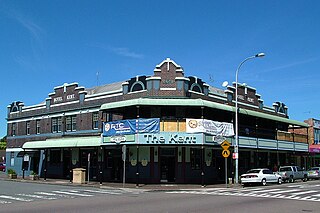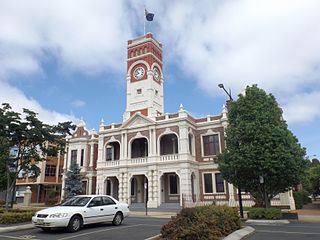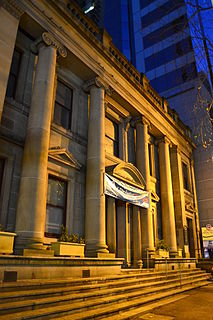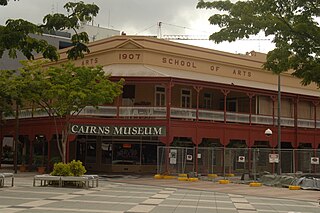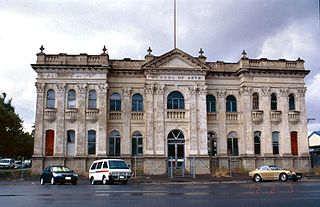The mid 1820s saw the rise of a movement for education in colonial New South Wales. And as was traditionally the case, much educational activity was undertaken by the churches, amidst sectarian disputes. Learned and philanthropic individuals - whether catholic or Protestant - were to participate rigorously in these developments. But as it generally occurred, a large portion of the funds for educational schemes came from public finances. [1]
Establishment
The inauguration of the Sydney Mechanics School of Arts (SMSA) took place over March and April 1833. In the same years, the charter of the Clergy and Schools Corporation - an instrument which bestowed privileged treatment upon the Church of England's Schools via the granting of land, was repealed by the British government. This left the provision of schools in New South Wales as unsystematic as it had been in pre-Corporation days and just as dependent on government funding. [4] [1]
After an audience with Governor Sir Richard Bourke, Henry Carmichael - Master of Classics at the Australian College - convened a meeting at the college to discuss the establishment of an "association for the diffusion of scientific and other useful knowledge among the mechanics" of the colony. [5] [1]
Difficulties in finding suitable and permanent accommodation were experienced for a time until January 1836, when negotiations to acquire the lease on an allotment in Pitt Street, adjoining the Independent Chapel, were commenced. Plans for a building had been accepted earlier that month, and on 6 February 1838, the new building was used for the first time. The building comprise a theatre, a lecture room, a museum and a library. The theatre, situated on the ground floor, had a curved front and was accessible via the centrally placed Colonial Georgian doorway with pediment which provided entry to the building. The library and reading room - both on the first floor - had a public entrance up stairs at the left rear of the building. [1]
Early in 1845, the Committee purchased the leasehold of their Pitt Street allotment and plans to add two rooms for the Librarian were commenced. Supervised by J. S. Duer and undertaken by a Mr Mackeller, these private apartments were completed early in the following year. [1]
Having received permission by a special Act of Parliament in 1853 to dispose of a piece of land reserved for the SMSA in the Haymarket, the Trustees commenced searching for a new site. Finally on 7 January 1855, the Independent Chapel was advertised for sale. The chapel was quickly purchased and incorporated into the SMSA. [1]
During the period 1845 to 1855, the original SMSA had required constant renovation and repair. On 3 May 1855, Bibb reported to the Committee that pending work suggested reconstruction of the two buildings rather than further renovations. (The chapel had been found to be built without solid foundations on low, damp ground). Costs of rebuilding and the need to amend the Sydney Mechanics School of Arts Act, 1852, caused delays. In the interim the old theatre was converted to a reading room while an opening was created to allow access to the Chapel which was then used as a new lecture theatre. [1]
The first set of plans for reconstruction were drawn up by John Bibb though only the façade design was brought to fruition. The foundation stone was laid by Governor Sir William Denison, the school's patron, at a ceremony on 19 December 1859. Work on the façade was completed late in April 1860. [1] The second set of plans were also designed by Bibb, though this time work was divided into two stages in order to allow the School to continue functioning. The first stage included all stonework and most of the alterations, narrow corridors giving access to various rooms, a library and reading room located on the ground floor, reductions in the size of the classrooms and the librarian's accommodation, and three single sets of stairs. Work commenced in September 1860 and was finalised in 1861. The second stage entailed rebuilding the Independent Chapel which was to continue as the lecture hall. Rebuilding began in December, 1861, and was completed on 6 September 1862. Work was delayed as a result of Bibb's death in February 1862. Special attention was paid to the chapel's ventilation. [1]
The SMSA had commenced its institutional life for literary and recreational proposes and as a place where science and technical drawing, the keys and blueprints to nature, could be imparted to ordinary men. The desire for theoretical knowledge was to grow during the 19th century. As industrialisation took root, setting off the education revolution of the 1870s and 1880s, knowledge and its acquisition became central to the generation of wealth. Now, more than ever, Mechanics' Institutes could assist in colonial development and in the 'process of upward social mobility among workmen ambitious to "improve themselves in all ways". [6] [1]
Thus in February 1873, the establishment of a Technical or Working Men's College was discussed and in July 1874, arrangements were made to lease a vacant allotment behind the School of Arts in George Street. These arrangements, however were not concluded until May 1877, though the plans for a college building were accepted from Benjamin Backhouse, having won the committee's competition for a design. [1]
The Technical or Working Men's College was to provide specialised Technical Education - advocated by engineer Norman Selfe and others. [2] [1]
With a grant from the Minister for Public Instruction towards the project, a tender from Messrs. Creber and Roberts was accepted on 30 July 1877. Stage 1 of the work was completed in October 1878. Stage 2 was finalised in March of the following year. The lack of funds hampered the growth of the college and its courses until at last, in 1888, the colonial government established a Board of Technical Education. During September, arrangements were made for the transferral of the Working Men's College to the Board. [1]
The State took over the running of the college and in time it became the Sydney Technical College - later to be formed into the University of Technology Sydney. [2] [1]
Subsequently, the SMSA reverted to its previous functions and in 1887, architect John Smedley redesigned its accommodation. A Ladies Reading room, a Smoke room and a stage in Bibb's lecture theatre were added. These alterations were finished in September 1888. With the removal of the college, the SMSA's revenue declined. As a result, the Committee moved to incorporate shops into the Pitt Street frontage. The library, the Ladies Reading room and the Secretary's office were relocated and the shops installed. Work was supervised by architect A. McQueen and was completed by June 1896. [1]


